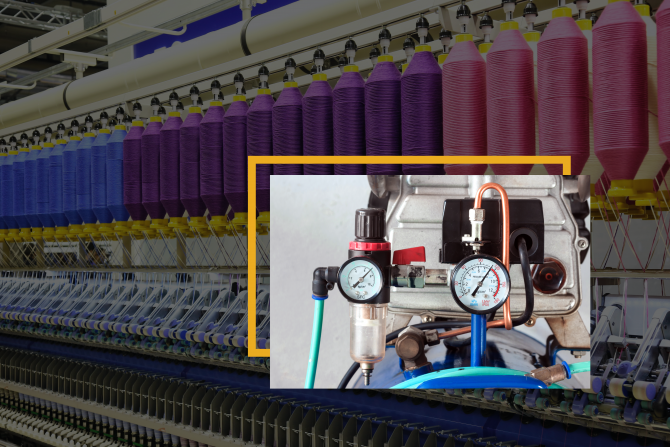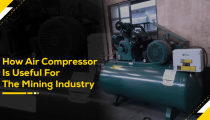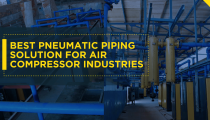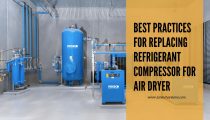Mining is an extensive industry that spans almost all over…

Ways To Maximise Air Compressor Efficiency and Minimise Costs
In a textile mill, energy savings is an important issue. Hidden leakages are one of the major causes of energy loss. A mill can reduce five to ten units of electricity per day if an energy audit can be implemented properly. This way, leakages are identified and repaired accordingly too. Improving a compressor’s performance helps in better production and saves energy, keeping up with the increasing demand of the textile market.
Aspects that determine compressors’ efficiency:
The efficiency of a compressed air system depends on three aspects.
a) Supply side
b) Distribution
c) Demand side
When the concern is energy conservation, these three areas demand professional attention. If anyone of these left unmonitored, a system might turn inefficient over time.
There are six major sub factors as follows, upon which the efficiency of a compressor depends at large.
Improper compressor control
· Pressure losses in transmission and distribution
· Overlooking air leakages
· Condensate management
· Air quality (in terms of pressure fluctuation, moisture, contamination from the piping system)
· Use of higher air pressure than is required
· Irregular maintenance
Ways to increase air compressors’ efficiency for cost & energy efficient textile production:
Replacing old installations with new technology compressors such as 2-stage rotary or 3-stage centrifugal compressors might be of great help. Without proper evaluation of the performance of air treatment requirements; units that are installed near points-of-use such as dryers, filters & FR units might not function as required. Evaluation of pressure requirements of different processes segregating low and high-pressure consumers is necessary on demand. Unregulated consumers need system pressure optimization as well. Evaluating the usage of waste heat from compressors is mandatory for saving energy costs. Monitoring the operations frequently helps in distribution & storage and minimise the pressure drops.
Moreover, regular optimization of air consumption & pressure helps clean air applications. Well trained and experienced teams must be engaged in controlling the operations for better optimization & sequencing. Most importantly, an effective leakage management program run by a team of professionals is highly essential. Additionally, choosing an air compressor suitable for a particular industry operation is important.
Selecting the right compressors for saving energy & cost:
Talking about the textile industry, the major concern has always been to fuel integrated textile units with high-quality airflow. To achieve the production targets, using lubricated compressors with superior air filtration systems is the best idea for segments like ginning mills, spinning mills and process units in textile plants.
Manufacturers must assess their plant capacity before understanding the requirements of single or multi-stage compressors in their factory. Single-stage compressors indeed cost less than multi-stage compressors yet for achieving energy efficiency the latter one is a better option. It saves more energy by cooling the air between stages, reducing its volume.
Despite having all advantages, industries go for single stage systems to avoid large investments but face difficulties with compressed air costs later. The reason, to be precise, resides in their technical specifications. Generally, single-acting reciprocating compressors are air-cooled and available in the smaller hp sizes (1 hp to 50 hp). However, such compressors tend to be less efficient than the other types. Double-acting reciprocating compressors are water-cooled and multi-stage versions are usually considered to be the most efficient types (100 hp to 250 hp). These come with both higher initial and installation costs and of higher maintenance too.
On the other hand, centrifugal compressors offer 100% oil-free air, continuous pressure and have high turndown capacity with efficient part-load and zero chances of wear and tear.
Save more with an efficiency boost
Saving cost and energy depends on how efficient the system is and how well operational guidelines are being followed. Well trained professionals must be engaged at work to fulfil technical and maintenance needs for cost-effective textile production. That is why educating employees and engaging teams with experience would be the first step towards ensuring the desired outcome.
Hence, with consistent monitoring and application of right handling techniques, optimum efficiency can be achieved which ensures more savings.




